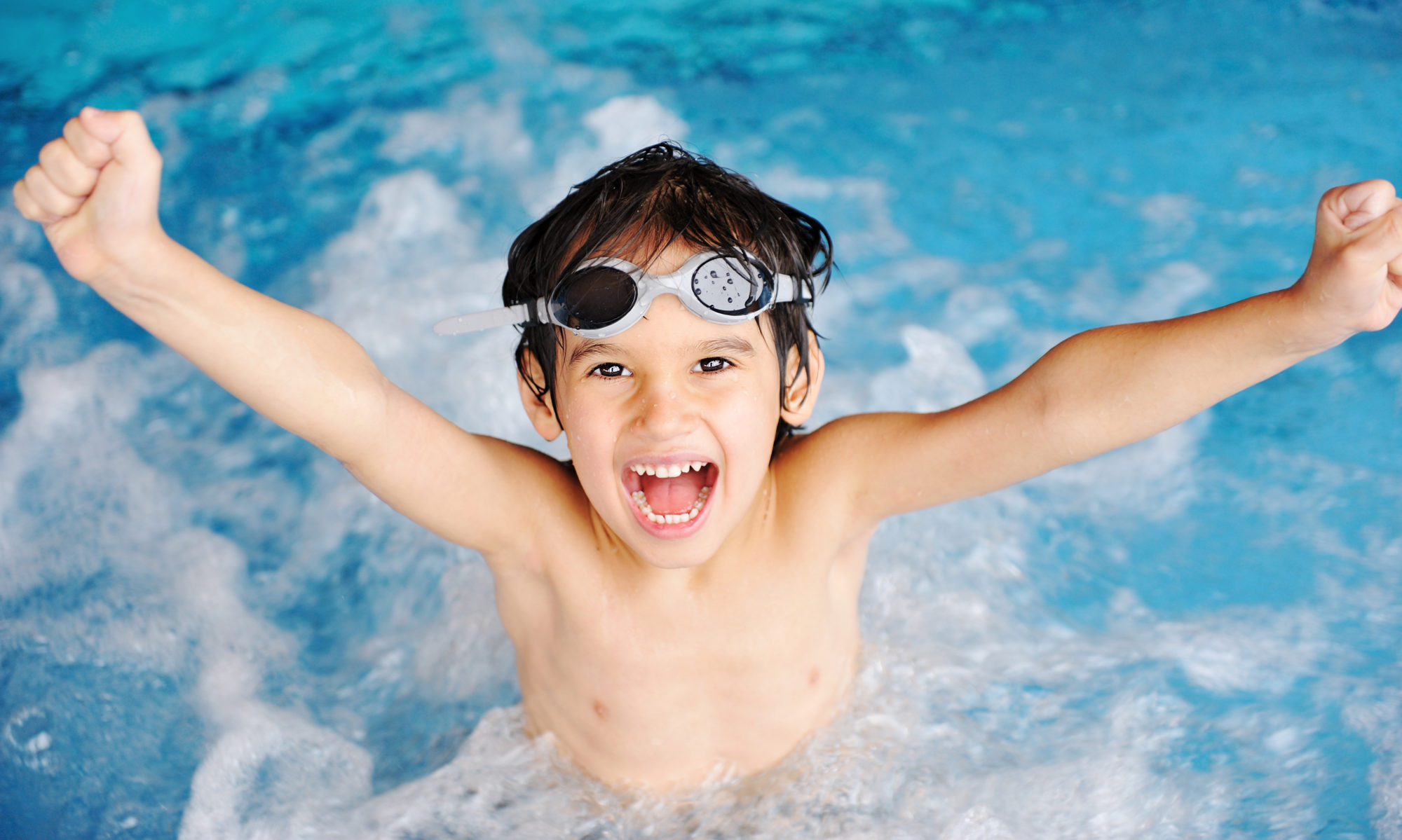You’ve got all your gear ready to go. You’re well rested, and so are your kids. You’ve read the book and perused the blog, learning how to teach and what to teach. You’re in the car and ready to go. What now? First, make sure you’ve got the kids in the car with you. No? Back into the house for them, then. Okay, ready?
Take it slow. Enjoy each other. Have fun. If you don’t enjoy each other and have fun, it’s going to be hard—maybe impossible—for you to teach your kids to swim. Your first visit to the pool will set the tone for the lessons to come. Use what you know about your child to make it a great experience for him, and he’ll be happy to come back again and again.
Know the Rules
When you get to the pool, show your child where the pool rules are posted and explain them, even if he can’t read yet. Make sure he understands never to go near or into the pool without an adult. Make sure he understands not to run in the pool area and not to jump or dive (unless the pool is deep enough and the rules allow it).
Know Where the Bathroom Is
Show him where the bathroom is. (You’ll be needing it before you get into the pool, anyway.) Check to see if there are any cool insects around, if he’s that age and that’s his thing. Ease into it.
Respect Your Kids’ Learning Styles
What kind of learner is your child? Does he like to observe from a distance? Does he like to jump right in? Respect his learning style.
If your child likes to observe before experiencing something for himself, this is the perfect opportunity to sit near the pool together and let him watch other kids playing. If your kid likes to jump into things right away, by all means get in the pool. Don’t rush things here, though. Spending the first day just watching other kids have fun is a good use of your time. If your child doesn’t even get his toes wet, that time hasn’t been wasted.
The lesson plan for your first lesson: let your child watch and explore. Don’t plan a formal lesson for the first visit. If it takes a few visits for your child to feel comfortable getting in the pool, don’t plan a formal lesson for the first time he actually gets into the pool, either.
Don’t force your child to get into the pool, and don’t let disappoint or disapproval color your interactions. This is for your child. It needs to happen at his pace. You can encourage your child to get in or to participate in play if you sense that he secretly kind of wants to, but don’t pressure him. If there’s another adult available to supervise your child, you can set an example by playing in the water while your child sits outside the pool and watches you. Provide encouragement, support, and time.
